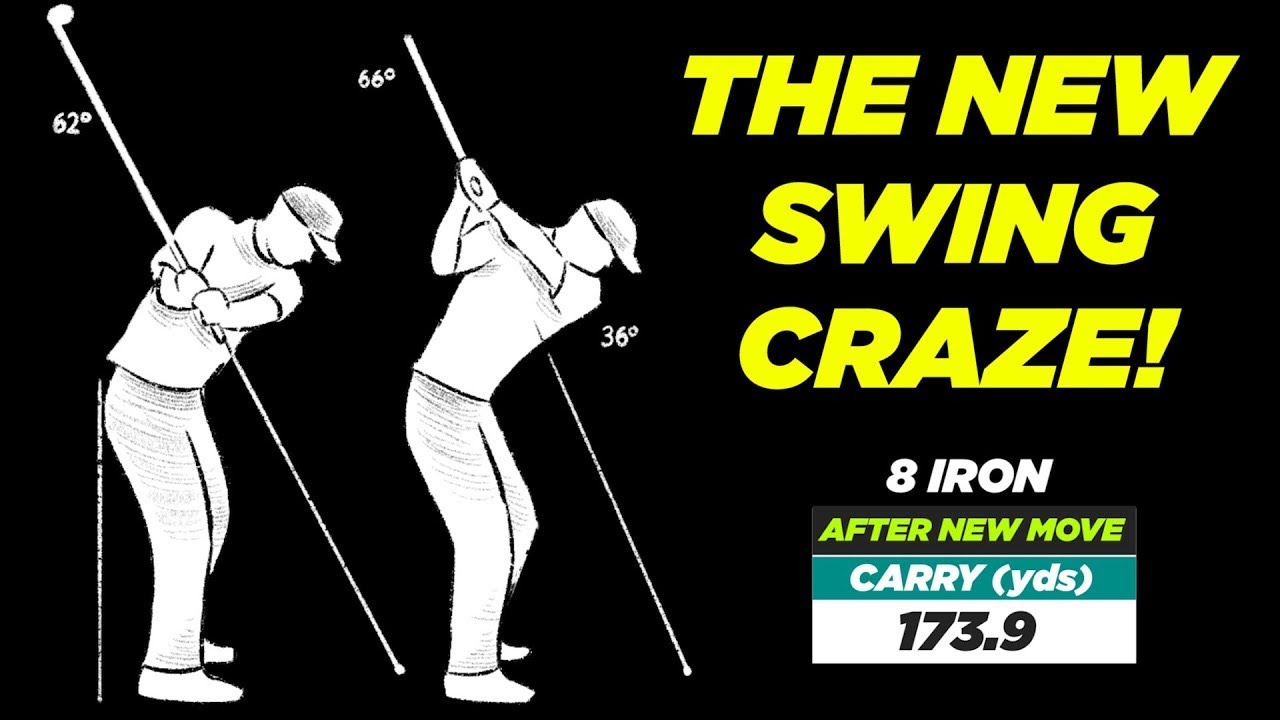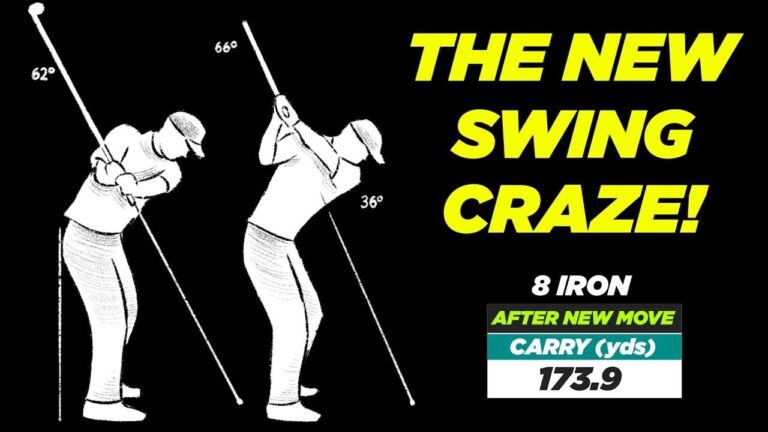
Transform Your Golf Game with a Simple Swing Fix
Hi, I’m Craig Hanson from World Class Golf. In this guide, I’ll walk you through the precise steps I teach golfers to turn poor ball-striking into consistent, powerful contact. This is the simple swing fix thousands are using right now. By combining essential body positions, like the 40° shoulder plane, reliable wrist alignment, and effective drills, you’ll arrive at impact with forward shaft lean and a neutral club face.
This article mirrors the voice and detail of my coaching. You’ll get a step-by-step tutorial, practice drills for home or range, and the subtle yet impactful cues that drive change.
What We’ll Cover
- Establish the 40° Shoulder Plane
- Set Wrist Alignment for Forward Shaft Lean
- Connection Drills for Club Control
- Preset to One O’Clock and Deepen Your Turn
- The Modern Through-Swing: Shift and Lift
- Using Training Aids to Accelerate Your Fix
- Develop a Lasting Practice Plan
- Common Mistakes and Solutions
- FAQs and Insights for the Simple Swing Fix
Step 1: Establish the 40° Shoulder Plane
Every elite golfer achieves the top of the backswing with shoulder planes around 40°. It’s crucial as it allows the club to return from inside and shallow into the ball, maintaining the right elbow position and reducing impact errors.
How to Achieve This
- Swing to the top and pause for a photo or video. Without a camera? Use a mirror or a friend’s feedback.
- Check if your lead shoulder is lower than your trail shoulder, tucked, and not flat.
- If flat, you’re likely compensating during the downswing, leading to flips or slides.
Practice Cue
“Shoulder under the chin.” As you swing up, feel your trail shoulder tuck under the chin and the lead shoulder drop, maintaining correct tilt and elbow positioning.
Step 2: Set Wrist Alignment for Forward Shaft Lean
A widespread issue is the lack of forward shaft lean. Achieve clean contact and ball compression with this fix:
- Grip the club, rotate your lead hand to see three knuckles.
- Swing to the top keeping the lead wrist flat and the clubhead higher than your lead forearm.
- This setup naturally encourages forward shaft lean at impact.
Why It Works
- Fosters a strong grip with natural wrist extension.
- Prevents premature angle breakdown.
- Promotes cleaner compression as the club stays behind the hands.
Cue
“Point your fingers at the ball at the top.” This visual cue assists in lowering the lead shoulder and maintaining structure.
Step 3: Connection Drills
Connection involves keeping your arms and body movements synchronized to support club rotation.
The Two-Club Palm Drill
Purpose: Develop the feel of the club behind the hands and strengthen the lead wrist angle.
- Hold two clubs running along your forearms, starting near a tee.
- Position the lead hand club to align with your belt buckle.
- Make slow swings focused on rotation, maintaining wrist structure.
Feel your hips initiate a forward move with the head steady, promoting powerful connection.
The “Point Fingers” Drill
Purpose: Maintain the lead wrist flat and prevent shoulder flattening.
- Swing to the top ensuring your fingers point toward the ball, hold briefly.
- Focus on this position during impact swings for consistency.
Step 4: Preset to One O’Clock and Deepen Your Turn
Create a reliable top-of-swing preset for consistency.
- Grip the club and lift it to one o’clock without changing hand-body relation.
- Maintain wrist angle through the swing.
- Avoid wrist flattening for more power and consistency.
Remember, feel the forearm creases and ensure the wrist remains primed for impact.
Step 5: Modern Through-Swing — Shift and Lift
Learn the modern shift-and-lift for dynamic, effective drives.
- Position a target in front of your ball for a dynamic starting position.
- Shift weight left for right-handers, keeping the head back.
- Feel hips and knees closing subtly as the body rotates through impact.
This concept ensures rotational energy storage and powerful forward shaft lean.
Step 6: Use Training Aids and Tech
Enhance feel and performance with the right tools:
- Video Analysis — Capture swing to compare with elite models.
- SwingSlapp — Compare your swing to elite averages and access instructional videos.
- The Hanger — Keeps the wrist on the forearm to maintain the right top position.
- HackMotion — Measures wrist motion for improved performance.
Practice Plan: Lasting Swing Improvements
Achieve consistency through a progressive 4-week practice structure:
Week 1 — Awareness and Preset
- Focus on 40° shoulder plane practice for 10 minutes daily.
- Perform two-club palm drill, 3 sets of 10 swings.
- Hit 30 balls emphasizing the preset comfort and minimal movement.
Week 2 — Connection and Feel
- Continue filming for ongoing progress checks.
- Add “point fingers” drill, 20 slow-motion swings.
- Hit 40 balls, focusing on consistent shaft lean.
Week 3 — Shift and Lift
- Use marker drill for shift-and lift, 3 sets of 12 reps.
- Combine preset and connection drills for real flight feedback.
- Begin on-course validation with par-3 holes.
Week 4 — Automation Under Pressure
- Introduce practice pressure, gamify drill practice.
- Extend practice to longer clubs, maintain technique cues.
- Regular video review and elite standard comparison.
By adhering to this plan, expect repeatable swing patterns, improved contact, and controlled ball flight.
Common Mistakes and Solutions
Here are typical errors and their corrections:
- Flipping at Impact: Reinforce wrist preset using the two-club drill.
- Upright Top: Instill “shoulder under the chin” for flatter swing planes.
- Over-the-Top: Prioritize connection to shallow club approach.
- No Shaft Lean: Utilize three-knuckle grip for automatic shaft lean.
FAQ — Simple Swing Fix
What’s crucial for average golfers?
Achieving a wrist connection that maintains club position behind hands during impact is vital for improved ball striking.
How to confirm my shoulder angle?
Film your swing to check the shoulder’s angle. If lacking tools, “shoulder under the chin” can remain an effective guide.
Lead wrist won’t stay flat — what to do?
Rotate your lead hand to show three knuckles and focus on the preset, practicing slow with mirror support.
Are methods suitable for seniors or high handicappers?
Yes, as these techniques minimize strength reliance, aiding consistent contact and improved distance efficiency.
Check frequency for swing filming?
Weekly filming is recommended for feedback over sporadic, extensive recordings, facilitating focused improvements.
Should training aids like The Hanger be used?
Definitely, as they accelerate learning. The Hanger reinforces wrist-forearm contacts, and HackMotion provides key metric insights.
Closing: Make It Your Habit
Combining an effective top-of-swing, wrist preset, connection, and modern through-swing cultivates superior ball striking.
Commit to small, focused adjustments—film regularly, leverage drills, and prioritize key feel cues such as shoulder position, finger point, hand preset, and club positioning.
Consider tools for evidence-based progress, and start with recording swings and engaging consistently with effective drills. Remember, measured practice equates to reliable progression.
“Keep the ring on the forearm during the downswing for optimal hand positioning and neutral club head alignment.” — Craig Hanson


0 Comments